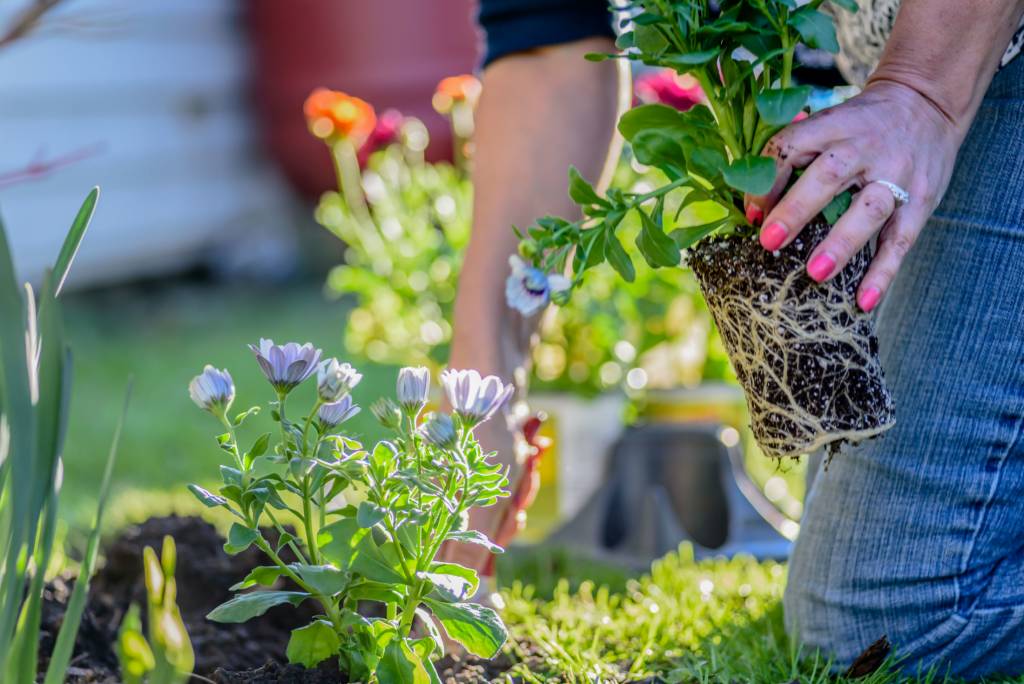
Planting Guidelines
Container-grown Trees and Shrubs
Care Prior to Planting: Container-grown plants can be maintained for an indefinite period prior to planting but can be severely damaged if the soil mix is allowed to dry out. During the growing season, the plant should be checked daily and watered to keep the soil mix damp but not soaking wet.
Site Preparation: As with a B&B plant, dig a wide hole with sloped sides. Container-grown plants are often shrubs or ground covers so the trunk flare does not exist or is difficult to find. The depth of the hole is determined by measuring the actual height of the rootball within the container. When completely planted, the plant should be no deeper than it was in the container.
Setting the Plant in the Hole: Handle the plant by lifting the container rather than the plant itself. To remove the plant from the container, turn the pot on its side and gently tap the container until the root system slides out. Once the plant is removed from the pot, allowing it to dry out can easily damage the root system. Complete the planting quickly or cover the roots with a moist cloth or burlap.
Preparing the Root System: It is critical that roots begin growing as soon as possible in their new location. To encourage this root development, always free up the root ends and loosen some of the outer container media. This will enable the roots to come in direct contact with the new backfill soil. Most well-grown plants will only require a gentle loosening up of the roots in the outer one-half inch of the ball, but if the roots appear more severely matted, it may be necessary to use a knife or small hand rake to open them up. The methods used in this process can vary based on individual success. If planting many container-grown plants, you may wish to ask one of our staff for a demonstration of technique.
Backfilling the Planting Hole: It is preferable to backfill with soil from the planting hole rather than to use heavily amended soils. Because container growing mixes tend to dry out more easily, however, we recommend that where the surrounding soil is very sandy or gravelly, reasonable topsoil be mixed with the backfill to aid in water retention and prevent the container mix from drying out.
Watering: Because of the different soil structures of the rootball, the backfill and the existing soil, water will have a difficult time moving into the root system from the surrounding soil during the first growing season. It’s critical, therefore, that the container-grown plant be mulched with 2–4″ of shredded pine or organic mulch and watered at least once weekly during the first growing season. This watering must be done in a way which ensures that the root system and soil-less growing mix receives the moisture. Generally speaking, rainfall will not provide adequate moisture until after several growing seasons. See our watering guidelines.









